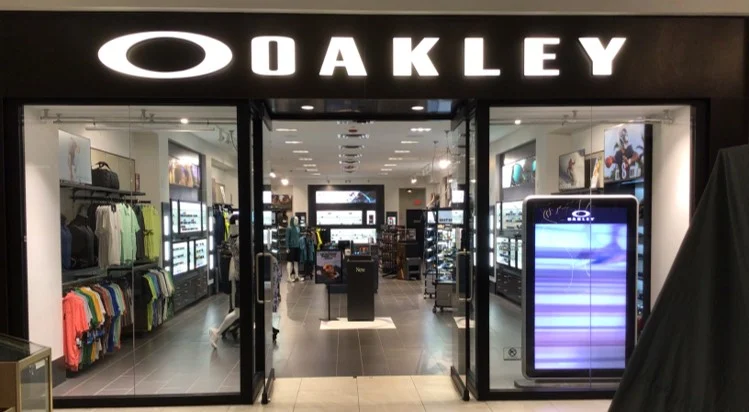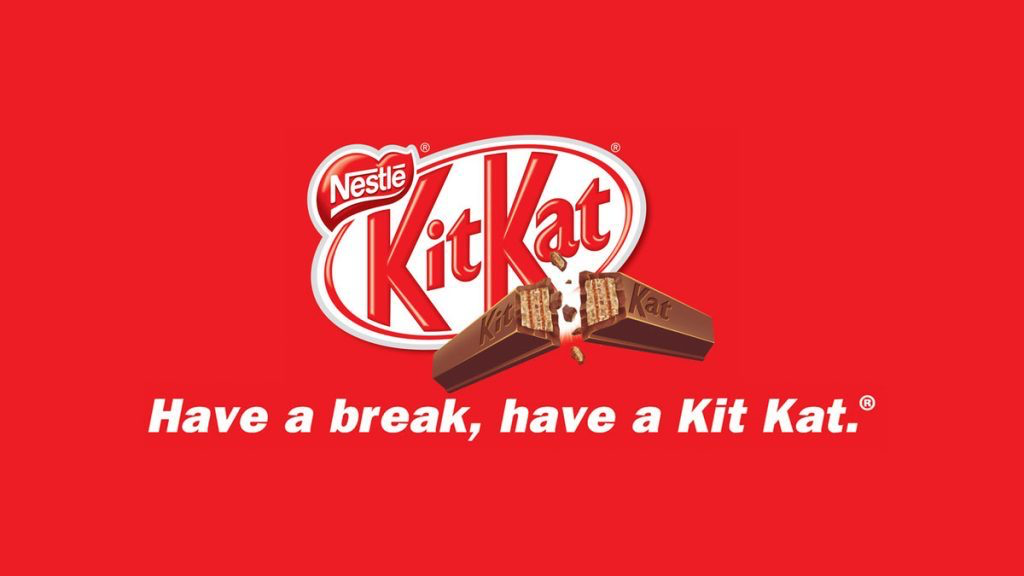A titan of the tire industry, Goodyear boasts a rich history synonymous with innovation and quality. Founded in 1898 by Frank Seiberling, the company’s very name pays homage to Charles Goodyear, the inventor of vulcanization. This revolutionary process transformed rubber from a sticky, unreliable material into a strong and versatile one, paving the way for the development of durable, dependable tires. This single invention marked a turning point in transportation, making Goodyear a pivotal player from the get-go.
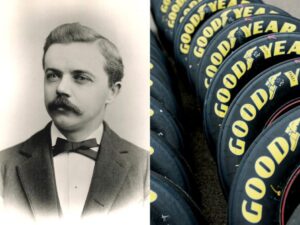
Goodyear’s story began in Akron, Ohio, where Seiberling, alongside David Mill, transformed a converted strawboard factory into their headquarters. Their initial focus was on bicycle tires, but their sights were set on a much larger market – automobiles. The early 1900s saw a surge in car ownership, and Goodyear was perfectly positioned to capitalize on this growing demand. Their tires, known for their ease of detachment and low maintenance requirements, quickly gained popularity.
Goodyear’s commitment to continuous improvement has been a hallmark of their success. They haven’t just kept pace with the evolving automotive landscape; they’ve actively shaped it. From the development of the first tubeless tire in 1948 to the introduction of all-season radials in the 1970s, Goodyear has consistently pushed the boundaries of tire technology. Their dedication to research and development ensures they remain at the forefront of performance, safety, and fuel efficiency.
Beyond automobiles, Goodyear’s reach extends far and wide. Their tires equip everything from airplanes and commercial trucks to motorcycles and racing cars. They’ve even supplied tires for lunar exploration vehicles, a testament to the company’s commitment to pushing the limits and exceeding expectations.
Goodyear’s impact extends beyond the products themselves. Their iconic blimps, a fixture at sporting events and celebrations for decades, have become a cultural symbol. The company also actively champions sustainability initiatives, focusing on environmentally friendly manufacturing practices and the development of fuel-efficient tires.
Looking ahead, Goodyear remains dedicated to staying at the forefront of the industry. They are constantly exploring new technologies, from self-sealing tires that automatically repair punctures to intelligent tires that monitor pressure and temperature. With a focus on safety, performance, and environmental responsibility, Goodyear is well-positioned to continue its legacy of driving innovation for generations to come.
Marketing Strategies of Goodyear
Goodyear has thrived for over a century not just on the strength of its innovative products, but also on its strategic marketing approach. Here’s a deep dive into the key marketing strategies that have kept the Goodyear brand rolling:
Brand Positioning
Goodyear leverages a strategic brand positioning to stand out in a competitive market. The company focuses on high performance, technology, and efficiency, appealing to drivers who prioritize a premium driving experience. This focus is evident across their product range, from those used in the high-performance world of Formula One to everyday consumer tires.
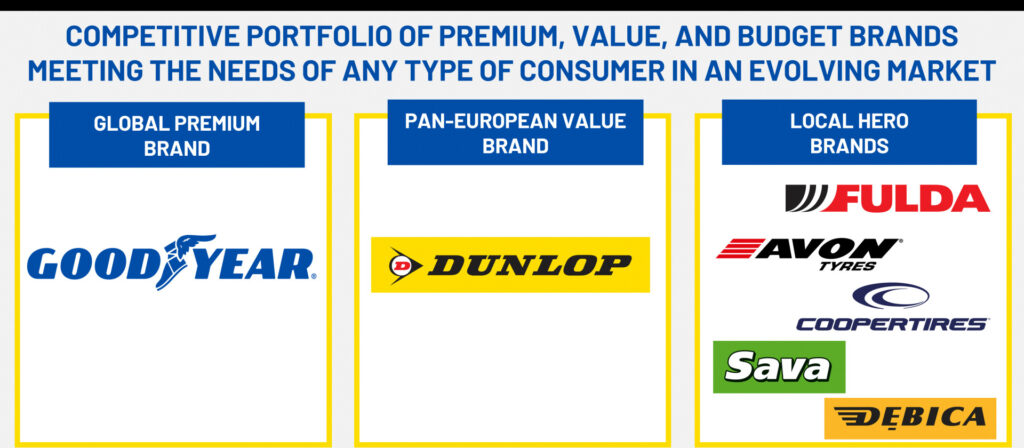
This commitment to innovation is a core aspect of Goodyear’s brand positioning. With multiple innovation centers and a history of industry-leading products, Goodyear positions itself as a leader in tire technology, constantly pushing the boundaries to meet the evolving needs of drivers. This focus on cutting-edge solutions ensures their tires deliver top-tier performance, efficiency, and a safe driving experience.
Goodyear’s brand identity is further strengthened by its iconic Wingfoot symbol, recognized worldwide. The Wingfoot, inspired by the Greek god Mercury, reflects the brand’s association with speed, travel, and progress. This powerful symbol, coupled with their focus on innovation and performance, has cemented Goodyear’s position as a trusted and reliable brand for drivers seeking the best on the road.

Product Differentiation
In a crowded tire market, Goodyear strategically utilizes product differentiation to carve out its niche. Their approach centers around four key pillars: performance, quality, innovation, and brand recognition.
Performance is a cornerstone of Goodyear’s differentiation strategy. Through heavy investment in research and development, they create tires known for exceptional handling and durability. Whether navigating city streets or tackling challenging terrains, drivers can rely on Goodyear tires to deliver a responsive and confident driving experience.
Goodyear doesn’t compromise on quality. Their tires are built with premium materials and utilize robust construction methods. This commitment translates into long-lasting, reliable tires that minimize the need for frequent replacements, ultimately saving drivers money in the long run.
Innovation is another key differentiator. Goodyear takes pride in being an industry leader in tire technology. Their continuous advancements have resulted in groundbreaking features that enhance performance and safety. From improved fuel efficiency to superior wet-weather traction, Goodyear’s innovations address the ever-changing needs of drivers.
Brand recognition is a powerful asset. Goodyear’s iconic standing as one of the most recognizable tire brands globally grants them a significant advantage. This established reputation fosters trust and confidence in consumers, making them more likely to choose Goodyear when seeking reliable tires for their vehicles.
Beyond these core differentiators, Goodyear tailors its approach with a strategic pricing strategy. Offering a diverse range of tires at various price points ensures there’s an option for every budget. Regular rebates and discounts further sweeten the deal, making their high-quality tires even more accessible to a wider consumer base.
Finally, exceptional customer service sets Goodyear even further apart. Their multi-channel support system, encompassing a toll-free number, a user-friendly website, and a network of retail stores, ensures easy access to assistance. Additionally, their satisfaction guarantee provides peace of mind, allowing customers to return tires that don’t meet their expectations.
Digital Marketing
In today’s digital age, Goodyear understands the importance of a robust online presence. They leverage a multifaceted digital marketing strategy to connect with customers, educate them on their products, and ultimately drive sales. Here’s a breakdown of their key tactics:
User-Friendly Website: Goodyear’s website serves as a central hub for all things tires. Consumers can easily access detailed information on their entire product range, explore tire features and benefits, and utilize tire selection tools to find the perfect fit for their vehicle. The website also integrates seamlessly with various devices, ensuring a smooth user experience across desktops, tablets, and smartphones.
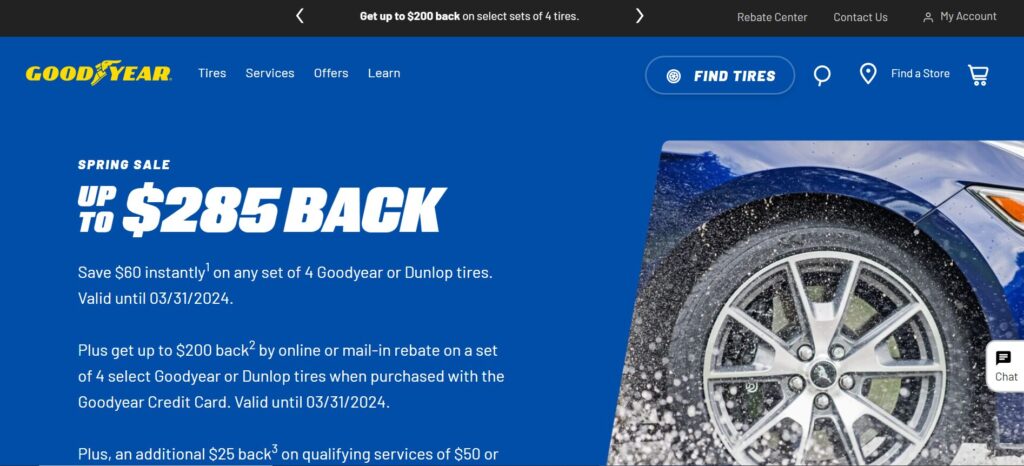
Search Engine Optimization (SEO): Goodyear optimizes its website content and online presence to rank high in search engine results pages (SERPs). This ensures that when consumers search for tires online, they’ll readily encounter Goodyear’s offerings. By strategically using relevant keywords and informative content, Goodyear increases its online visibility and captures potential customers at the crucial research stage of their buying journey.
Paid Advertising: Goodyear utilizes targeted online advertising to reach a wider audience. By leveraging platforms like search engines and social media, they can display targeted ads to consumers who are actively researching or considering tire purchases. These ads can highlight specific product features, promotions, or deals, driving website traffic and generating leads.
Content Marketing: Goodyear creates informative and engaging content that educates consumers about tires and tire safety. This content can take various forms, including blog posts, infographics, videos, and social media content. By providing valuable information, Goodyear establishes itself as a trusted resource and positions itself as a thought leader in the tire industry.
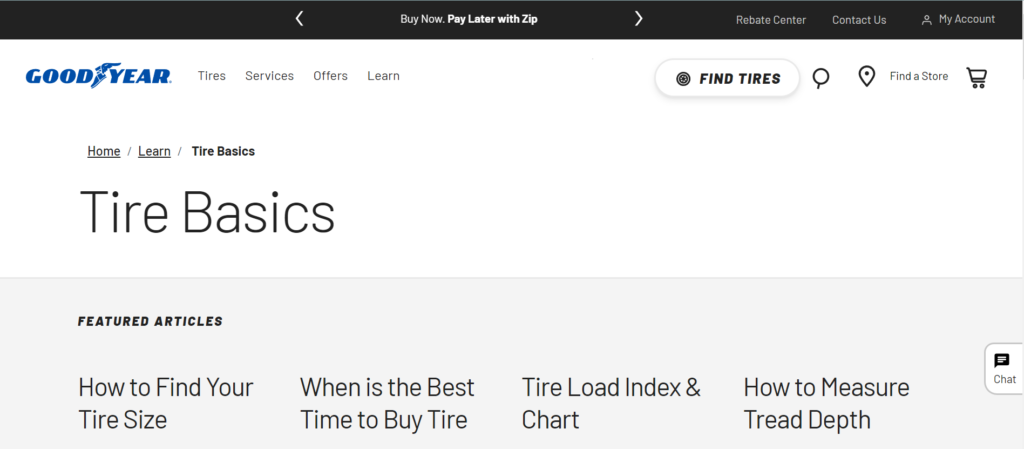
Social Media Engagement: Goodyear actively engages with its audience on social media platforms. They share informative content, respond to customer inquiries, and participate in relevant conversations. This social media presence fosters brand awareness, builds relationships with potential customers, and allows Goodyear to showcase its brand personality in a more interactive way.
By implementing these comprehensive digital marketing strategies, Goodyear has successfully navigated the online landscape. Their user-friendly website, focus on SEO and paid advertising, informative content creation, and active social media engagement have all contributed to their success in reaching a wider audience, generating leads, and ultimately driving sales in the ever-evolving digital marketplace.
Sponsorships and Partnerships
Goodyear leverages a powerful marketing strategy built around sponsorships and partnerships. This collaborative approach allows them to connect with diverse audiences and showcase their brand in dynamic settings.
A cornerstone of this strategy is their long-standing partnership with NASCAR, dating back to 1954. As the official tire supplier, Goodyear’s name is synonymous with high-performance racing. This association positions their brand at the forefront of cutting-edge tire technology, built to withstand the demanding conditions of competitive racing. The sheer volume of tires produced for NASCAR each year further emphasizes their commitment to innovation and excellence.
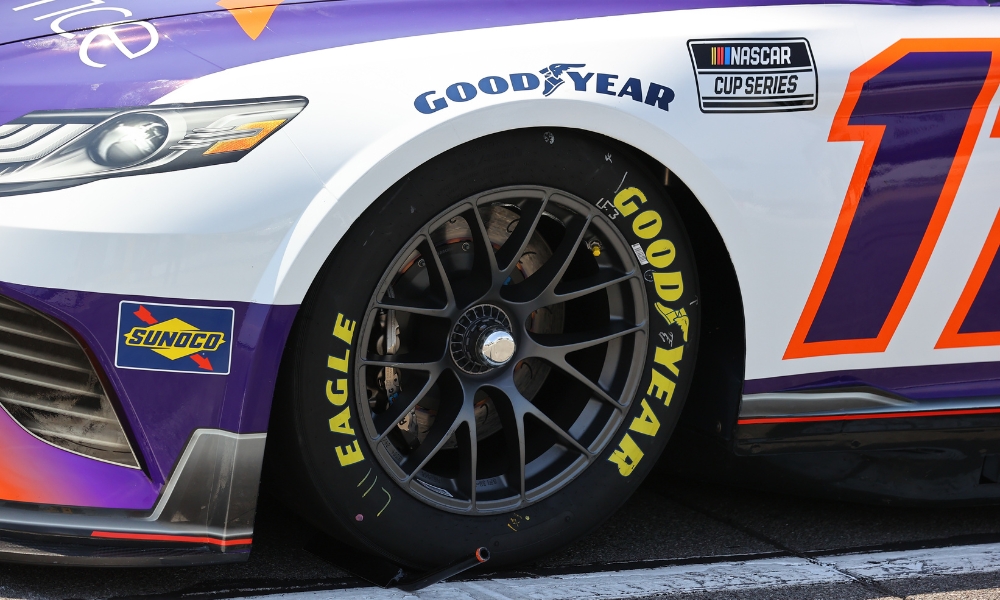
Beyond the racetrack, Goodyear cultivates partnerships that cater to specific market segments. Their sponsorship of the Family Farming Business of the Year category at the British Farming Awards connects them directly with agricultural audiences. Similarly, the partnership with André de Villiers, brand ambassador for the Safari 4×4 Roetes series, taps into the off-road adventure market. These targeted collaborations demonstrate Goodyear’s commitment to providing tires specifically designed for various driving needs and terrains.
By strategically partnering with organizations like NASCAR, the British Farming Awards, and off-road adventure icons, Goodyear amplifies its brand message, reaching a wider audience and solidifying its position as a leader in diverse tire segments.
Retail Marketing
Goodyear’s retail strategy goes beyond simply selling tires. They’ve crafted an immersive brand experience through a multi-pronged approach.
A key element is their investment in shop-in-shop outlets. These stores, often within existing tire dealerships, offer a dedicated Goodyear space. This allows for standardized service and a consistent brand experience across locations. The shops go beyond tires, often featuring car accessories and strategically placed Goodyear blimps to enhance brand recall and recognition.
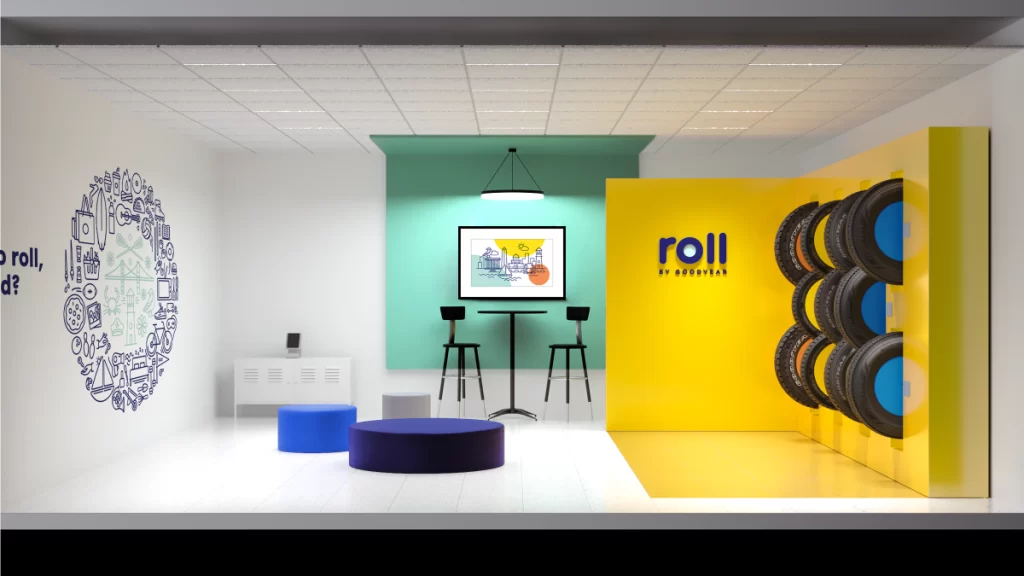
Furthermore, Goodyear embraces organized retailing as a future growth strategy. This involves partnering with established tire and auto service chains to ensure their products are readily available and professionally installed. This focus on organized retail outlets streamlines the customer experience, allowing for one-stop shopping and fostering a sense of psychological safety for consumers seeking reliable, experienced tire services.
By combining shop-in-shop experiences with strategic partnerships and a commitment to high-touch service, Goodyear positions itself as a comprehensive tire solution provider. This approach caters to customer convenience and builds trust, ultimately driving brand loyalty.
Environmental Sustainability
Goodyear recognizes that environmental sustainability is no longer just an ethical responsibility, but a powerful marketing strategy. They’ve strategically woven sustainability into their brand narrative, resonating with eco-conscious consumers.
A core aspect of this approach is their commitment to sustainable sourcing. Goodyear actively seeks out sustainable natural rubber, increases the use of eco-friendly materials in their tires, and meticulously tracks raw materials to minimize environmental impact. Additionally, they eliminate materials of concern and manage supply chain risks to ensure responsible sourcing practices throughout their operations.
Beyond sourcing, Goodyear champions responsible operations. They’ve demonstrably reduced their environmental footprint, achieving significant reductions in energy usage and greenhouse gas emissions compared to a 2010 baseline. This commitment extends beyond their own facilities, as they collaborate with customers to help them achieve their sustainability goals. By promoting environmentally friendly practices across their business ecosystem, Goodyear strengthens its brand image as a responsible industry leader.
Furthermore, Goodyear fosters a culture of sustainability within its workforce. By educating associates and engaging them in their sustainability journey, they create a company-wide commitment to environmental responsibility. This not only enhances employee morale but also allows them to be brand ambassadors, further amplifying Goodyear’s sustainability message to the public. Ultimately, Goodyear’s strategic integration of environmental practices positions them as a leader in sustainable mobility, attracting environmentally conscious consumers and solidifying their brand reputation for years to come.
Overall, Goodyear’s marketing strategies are diverse and multifaceted, focusing on building brand awareness, driving product differentiation, engaging with customers, and demonstrating corporate values such as innovation and sustainability. These strategies help Goodyear maintain its position as a leading player in the global tire industry.
Marketing Mix of Goodyear
Goodyear’s success can be attributed to its strategic implementation of the marketing mix, also known as the 4Ps: Product, Price, Place, and Promotion. Let’s delve deeper into each element and explore how Goodyear excels in each aspect.
1. Product
Performance and Quality: Goodyear prioritizes high performance and top-tier quality across its entire tire range. Heavy investment in R&D ensures their tires deliver exceptional handling, durability, and safety features, catering to drivers who value a premium driving experience.
Innovation: Goodyear is a leader in tire technology, constantly pushing boundaries to develop cutting-edge features like improved fuel efficiency and superior wet-weather traction. This focus on innovation ensures their products remain at the forefront of the tire industry.
Diversity: Goodyear offers a wide range of tires to cater to various needs and budgets. From high-performance racing tires to everyday passenger car tires, and even specialized options for agricultural and off-road vehicles, Goodyear has a product to suit every driver.
2. Price
Value-Based Pricing: Goodyear employs a value-based pricing strategy. While their products may not be the cheapest on the market, the focus is on delivering exceptional value for the price paid. Their reputation for performance, quality, and durability justifies a slight premium compared to budget brands.
Tiered Pricing: Goodyear offers a range of tires at different price points, ensuring there’s an option for every budget. This allows them to cater to a wider consumer base while still maintaining their brand positioning in the premium tire segment.
Promotions and Rebates: Goodyear strategically uses promotions and rebates to incentivize purchases. These tactics can make their high-quality tires even more accessible to a broader range of consumers.
3. Place
Distribution Channels: Goodyear leverages a robust network of distribution channels to ensure their tires are readily available to consumers. This includes partnerships with established tire and auto service chains, shop-in-shop outlets within dealerships, and online retailers.
Global Presence: Goodyear has a strong international presence with manufacturing facilities across the globe. This allows them to cater to diverse regional needs and ensure efficient product delivery to various markets.
Convenience: Goodyear prioritizes customer convenience. Their partnerships with established retailers and the availability of online options provide easy access to their products.
4. Promotion
Interactive Events:
Goodyear may participate in industry trade shows or consumer events, setting up interactive displays that allow potential customers to experience their products firsthand. These events can be particularly effective for showcasing new tire technologies or promoting specific product lines.
Sponsorships and Partnerships:
Strategic partnerships with NASCAR, the British Farming Awards, off-road adventure personalities, and others allow Goodyear to connect with specific market segments and showcase their brand in dynamic settings. This approach amplifies their brand message and positions them as leaders in diverse tire categories.
- NASCAR: Goodyear’s longstanding partnership with NASCAR allows for prominent brand placement during races and race broadcasts. They also actively participate in fan engagement events, further solidifying their association with high-performance racing.
- Other Sponsorships: Partnerships with entities like the British Farming Awards, off-road adventure shows, or automotive driving academies allow Goodyear to target specific market segments and showcase their commitment to diverse driving needs.
Digital Marketing:
- User-Friendly Website: Goodyear’s website serves as a central hub, offering detailed product information, tire selection tools, and a smooth user experience across all devices. They leverage content marketing strategies like blog posts, infographics, and videos to educate consumers on tire safety and different product features.
- Search Engine Optimization (SEO): Goodyear meticulously optimizes its website content to rank high in search results. This ensures that when consumers search for tires online, they’ll readily encounter Goodyear’s offerings, maximizing brand visibility during crucial research phases.
- Targeted Online Advertising: Goodyear utilizes targeted advertising on search engines and social media platforms. These ads can highlight specific promotions, address consumer pain points, or showcase new product features. By targeting relevant demographics and interests, they can deliver their message to the most receptive audiences.
- Social Media Engagement: Goodyear actively engages with their audience on social media platforms like Facebook, Instagram, and Twitter. This includes sharing informative content, responding to inquiries, and participating in relevant conversations. This fosters brand awareness, builds relationships with potential customers, and allows Goodyear to showcase its brand personality in an interactive way.
Traditional Marketing:
- Television Advertising: Goodyear strategically uses television commercials, particularly during sporting events and automotive programming, to reach a broad audience and showcase their association with high-performance driving.
- Print Advertising: Goodyear may utilize targeted print advertising in industry publications or automotive magazines to reach specific consumer segments interested in performance or off-road driving.
- Public Relations: Goodyear cultivates relationships with media outlets to secure positive press coverage of their products, sustainability initiatives, and sponsorships. This can further enhance brand awareness and credibility.
Brand Awareness:
Goodyear has built a strong brand image through consistent messaging and a long history of excellence. The iconic Wingfoot symbol and their association with high performance and innovation contribute to their brand recognition and consumer trust.
By strategically executing each element of the marketing mix, Goodyear has established itself as a leading force in the tire industry. They offer high-performance, innovative tires at competitive prices, readily available through convenient channels, and backed by a powerful brand image and strategic marketing efforts. This comprehensive approach ensures they not only meet customer needs but also cultivate brand loyalty for generations to come.
Porter’s Five Forces of Goodyear
Goodyear has carved its niche through a commitment to performance, innovation, and quality. However, the global tire market is a complex ecosystem with various forces influencing competition. To understand Goodyear’s strategic landscape, let’s analyze these forces using Michael Porter’s Five Forces framework:
1. Threat of New Entrants: (Moderate)
The threat of new entrants in the tire industry is moderate. While barriers to entry exist, they are not insurmountable. Here’s why:
- High Capital Expenditure: Setting up manufacturing facilities, R&D infrastructure, and distribution networks necessitates significant capital investment.
- Brand Recognition and Loyalty: Established brands like Goodyear benefit from strong brand recognition and customer loyalty, making it challenging for new entrants to gain market share.
- Technology and Expertise: Developing high-quality tires requires ongoing investment in research and development, posing a hurdle for new players.
However, factors like relaxed regulations in certain regions and the potential for disruptive technologies could pose a future threat.
2. Bargaining Power of Suppliers: (Moderate)
The bargaining power of suppliers in the tire industry is moderate due to a few key factors:
- Consolidated Raw Material Industry: The rubber industry, a crucial supplier for tire production, is relatively consolidated. This gives suppliers some leverage in negotiating prices.
- Multiple Source Options: Tire manufacturers like Goodyear often have multiple sources for raw materials like natural rubber and synthetic rubber, mitigating dependence on any single supplier.
- Importance of Supplier Relationships: Maintaining strong relationships with key suppliers is crucial for ensuring a consistent supply of high-quality materials.
Goodyear’s global presence and diverse supplier network help them manage supplier power effectively.
3. Bargaining Power of Buyers: (Strong)
The bargaining power of buyers in the tire industry is strong, driven by several factors:
- Standardized Products: Tires, to a certain extent, are a standardized product. This empowers buyers to compare prices and features across different brands.
- Price Sensitivity: Consumers, particularly in the replacement tire market, are often price-sensitive, putting pressure on tire manufacturers to offer competitive pricing.
- Large, Powerful Buyers: Large auto manufacturers and fleet management companies have significant buying power and can negotiate favorable pricing with tire suppliers.
Goodyear mitigates this force by offering a tiered product portfolio catering to various budgets, emphasizing the value proposition of their premium products, and building strong relationships with key dealerships and automakers.
4. Threat of Substitutes: (Moderate)
The threat of substitutes in the tire industry is moderate, but it’s a factor to consider:
- Retreaded Tires: Retreaded tires offer a more affordable alternative for budget-conscious consumers. However, safety concerns and lower performance may limit their appeal.
- Solid Tires: In specific applications, solid tires eliminate the risk of punctures but may not be suitable for all vehicles or driving conditions.
- Advancements in Alternative Transportation: The future of transportation, including electric vehicles and autonomous cars, might require tires with different functionalities.
Goodyear actively invests in research to stay ahead of potential substitutes and ensure their products remain relevant in the evolving mobility landscape.
5. Competitive Rivalry: (Strong)
The global tire industry is highly competitive, with several established players vying for market share. Some key competitors include:
- Michelin
- Bridgestone
- Continental
- Hankook Tire
- Yokohama Rubber Company
This intense competition drives innovation, product differentiation, and aggressive marketing strategies.
Goodyear’s Strategic Response:
By understanding Porter’s Five Forces, Goodyear can formulate effective strategies to navigate this competitive landscape. Here are some potential approaches:
- Continued Focus on Innovation: Investing in R&D to develop cutting-edge tire technologies that enhance performance, fuel efficiency, and safety allows Goodyear to differentiate itself from competitors.
- Brand Building and Marketing: Maintaining a strong brand image through targeted marketing campaigns can solidify brand loyalty and customer trust.
- Operational Efficiency: Streamlining operations and optimizing production processes can help Goodyear maintain competitive pricing and profitability.
- Focus on Customer Segments: Tailoring products and services to cater to the specific needs of different customer segments, such as high-performance car enthusiasts, budget-conscious drivers, or commercial fleets, can create a competitive advantage.
Goodyear’s success lies in its ability to navigate the complex competitive landscape of the tire industry. By understanding and strategically responding to Porter’s Five Forces, Goodyear can continue to be a leader in tire technology, delivering high-quality products that meet the evolving needs of drivers worldwide.
Also Read: Apollo Tyres – History, Brands, Marketing Strategies
To read more articles like this, subscribe to our newsletter

